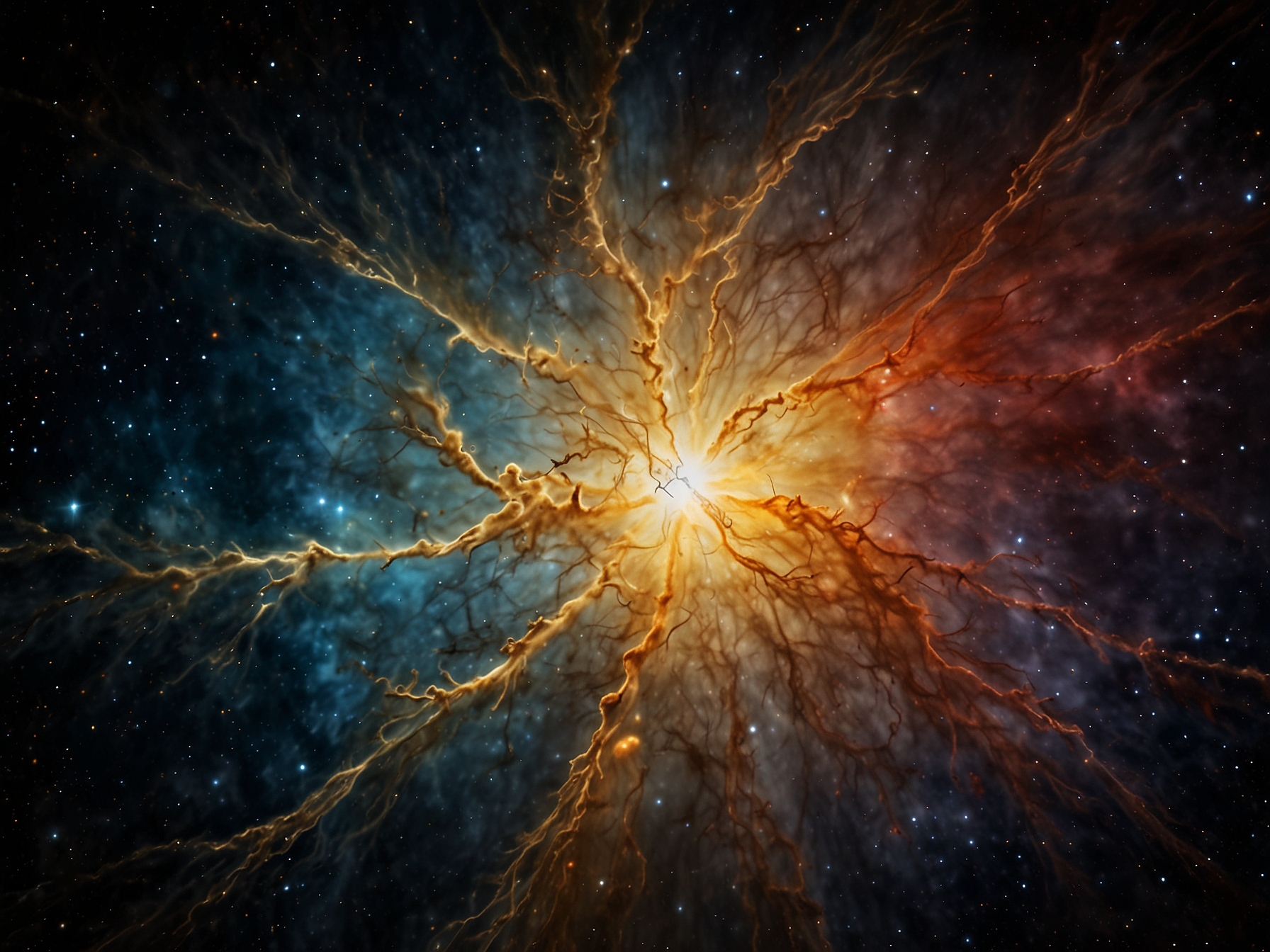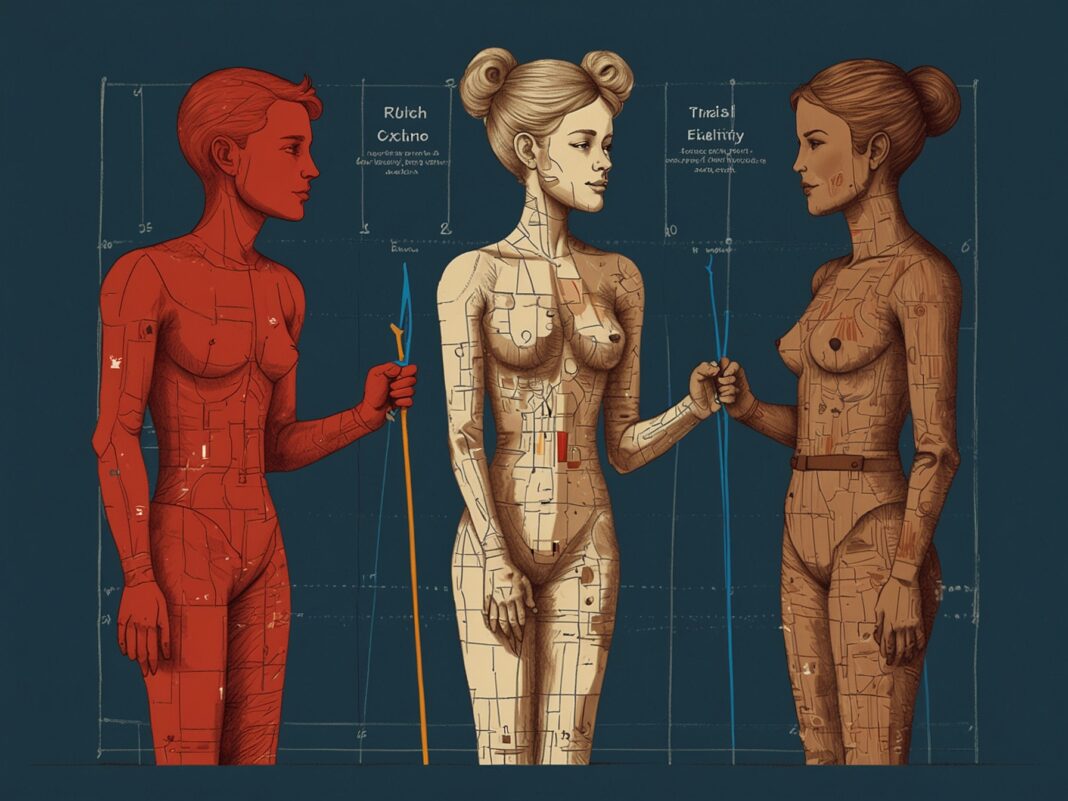The Crab Nebula, a timeless celestial body located 6,500 light-years from Earth in the constellation Taurus, has been a subject of awe and scientific curiosity for decades. Recently, new data from NASA’s James Webb Space Telescope has provided unprecedented insights into this unusual supernova remnant. By utilizing the telescope’s state-of-the-art instruments, such as the Mid-Infrared Instrument (MIRI) and the Near-Infrared Camera (NIRCam), a team of scientists has redefined our understanding of the phenomenon. This breakthrough not only illuminates the specifics of the Crab Nebula’s composition but also raises fascinating questions about the nature of such cosmic explosions.

© FNEWS.AI – Images created and owned by Fnews.AI, any use beyond the permitted scope requires written consent from Fnews.AI
The Crab Nebula originated from a supernova explosion, which was first observed by Chinese astronomers in 1054 AD. This dramatic event resulted in an expanding cloud of gas and dust, known today as the Crab Nebula. With contemporary ground-based telescopes, astronomers have extensively studied this remnant, but the James Webb Space Telescope’s advanced capabilities offer a closer and more detailed look. The intricate web of interactions and elements making up the nebula has been brought to light like never before. This unparalleled clarity opens new windows into the death throes of massive stars and enriches our comprehension of the mechanics behind supernovae.
The James Webb Space Telescope’s MIRI and NIRCam have played a pivotal role in this leap forward. MIRI focuses on capturing mid-infrared light, which can penetrate dust clouds and reveal hidden structures within the nebula. This ability to see through obscuring material provides an undistorted view of the core components that form the Crab Nebula. Meanwhile, NIRCam is geared toward near-infrared light, offering high-resolution images that detail the distribution and temperature of various materials. The synergy of these two powerful instruments equips scientists with comprehensive datasets to analyze the nebula’s complexity thoroughly.

© FNEWS.AI – Images created and owned by Fnews.AI, any use beyond the permitted scope requires written consent from Fnews.AI
Through the detailed data collected, researchers have discovered that the Crab Nebula comprises various elements, each playing a significant role in its structure and evolution. Primarily hydrogen and helium, the nebula also contains traces of heavier elements like oxygen, sulfur, and iron. These elements are the building blocks of stars and planets, recycled through space in the wake of supernova explosions. Understanding the distribution of these elements within the nebula contributes to a more profound grasp of stellar life cycles and the cosmic processes that govern them.
One key finding from this new investigation is the identification of unique molecular compounds within the Crab Nebula. These compounds, previously undetectable with older technology, showcase the nebula’s dynamic chemical environment. For instance, researchers have found complex carbon molecules that could serve as precursors to life-forming compounds. This fascinating discovery hints at the potential for such environments to foster pre-biological chemistry, paving the way for questions about life’s origins on a universal scale.
The advanced imaging capabilities of the James Webb Space Telescope also enable scientists to study the pulsar at the heart of the Crab Nebula with unprecedented detail. This neutron star, spinning at an incredible rate, emits beams of electromagnetic radiation detectable on Earth. By analyzing the pulsar’s characteristics, researchers gain deeper insight into the life cycle of neutron stars and the role they play in shaping their surrounding environments. This information is vital for building accurate models of stellar evolution and understanding the ultimate fate of massive stars.
Moreover, the data reveals intricate structures within the nebula that indicate dynamic processes at play. Jets of particles emitted by the pulsar create ripples and shock waves throughout the nebula, continually reshaping its expanding boundaries. These structures could only be speculated about before the James Webb Space Telescope provided visual confirmation. By observing these phenomena, scientists can test theoretical models and refine our knowledge of astrophysical processes, contributing to more robust predictions and understanding of the universe.
This investigation into the Crab Nebula’s origins and composition is more than a mere academic exercise; it has practical implications for the future of space exploration and astrophysics. The methodologies and technologies refined through this research will be applicable to studying other celestial objects, from nearby planetary nebulae to distant galaxies. As we push the boundaries of our observational capabilities, each new discovery adds a piece to the puzzle of our universe’s grand tapestry, helping humanity understand its place among the stars.
The findings from NASA’s James Webb Space Telescope also emphasize the importance of international collaboration and continued investment in space science. By pooling resources, expertise, and data from various countries and institutions, we can accelerate the pace of discovery and tackle some of the most pressing questions in astrophysics. The success of this investigation into the Crab Nebula serves as a testament to what can be achieved when the global scientific community comes together in pursuit of knowledge.
Looking ahead, scientists are eager to apply the lessons and technology from this study to other cosmic phenomena. The Webb Telescope’s ability to peer into the universe’s most concealed corners holds promise for uncovering secrets that have eluded humanity for millennia. From unearthing the mysteries of dark matter to studying the formation of the first stars and galaxies, the telescope’s potential impacts are boundless. In this age of exploration, every new discovery brings us closer to comprehending the universe’s intricacies and our place within it.
Was this content helpful to you?





